Hyundai used the LA Auto Show today to reveal the American version of its high-performance Ioniq 5 N electric car — the quickest car Hyundai has ever built.
Hyundai revealed the car a few months ago, so you may already know the basics. But the company, like most automakers, tweaks its cars slightly for the American market. This was the automotive press’s first chance to see what changes Hyundai has made for American tastes.
They include more power. Well, one more “power.” The U.S.-spec 2025 Ioniq 5 N boasts 641 horsepower to the overseas version’s 640.
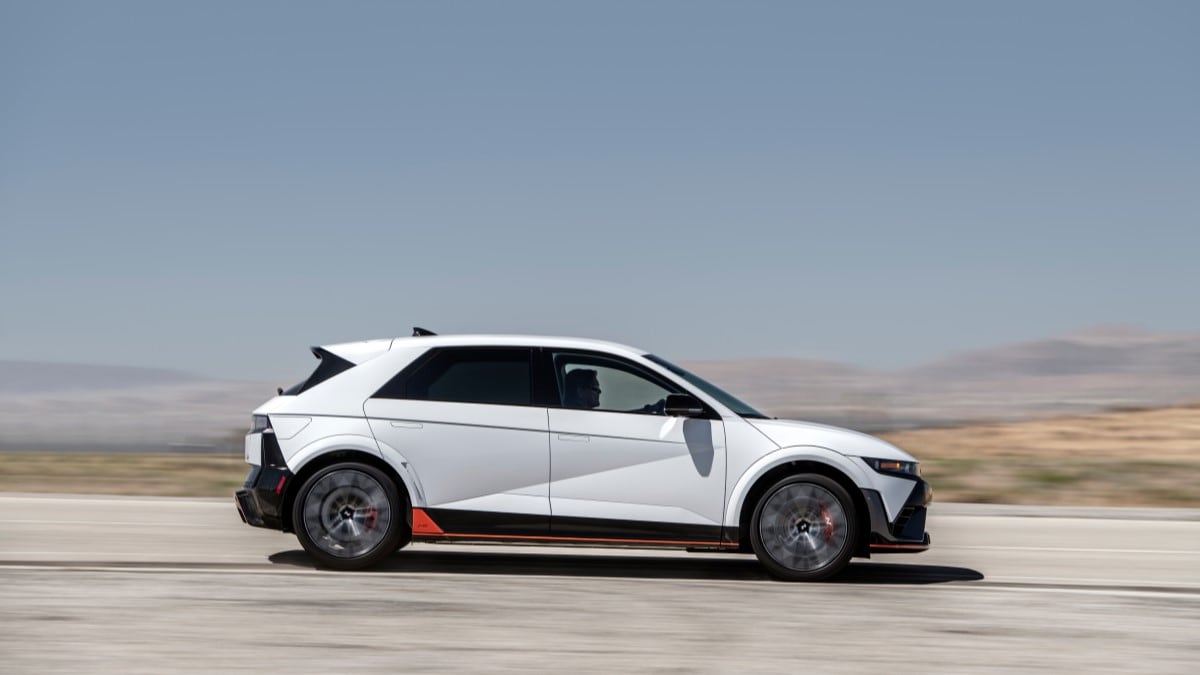
About N Cars
In case this is all new to you, we should explain. Many automakers have an in-house tuner shop that builds high-performance versions of regular vehicles. Hyundai calls its high-powered lineup N cars.
Some Hyundais get a warmed-up N-Line model, which is a bit sportier than the typical edition. The Hyundai Sonata N-Line, for instance, gets a turbocharger, rev-matching when its transmission is used in manual mode, and a few visual tweaks to make it look more aggressive.
Others get a pure, hot N model. The Elantra N takes the ordinary Elantra and adds track-day tweaks like high-performance tires, sharpened steering, suspension upgrades, and a short-throw 6-speed manual transmission to produce something far spicier than the economy car it’s based on.
The 2025 Ioniq 5 N is a true N car. It takes the funky Ioniq 5 electric car and turns every dial to 11 on a 10-point scale.
Hyundai hasn’t even hinted at pricing. The standard 2024 Ioniq 5 starts at $41,650.
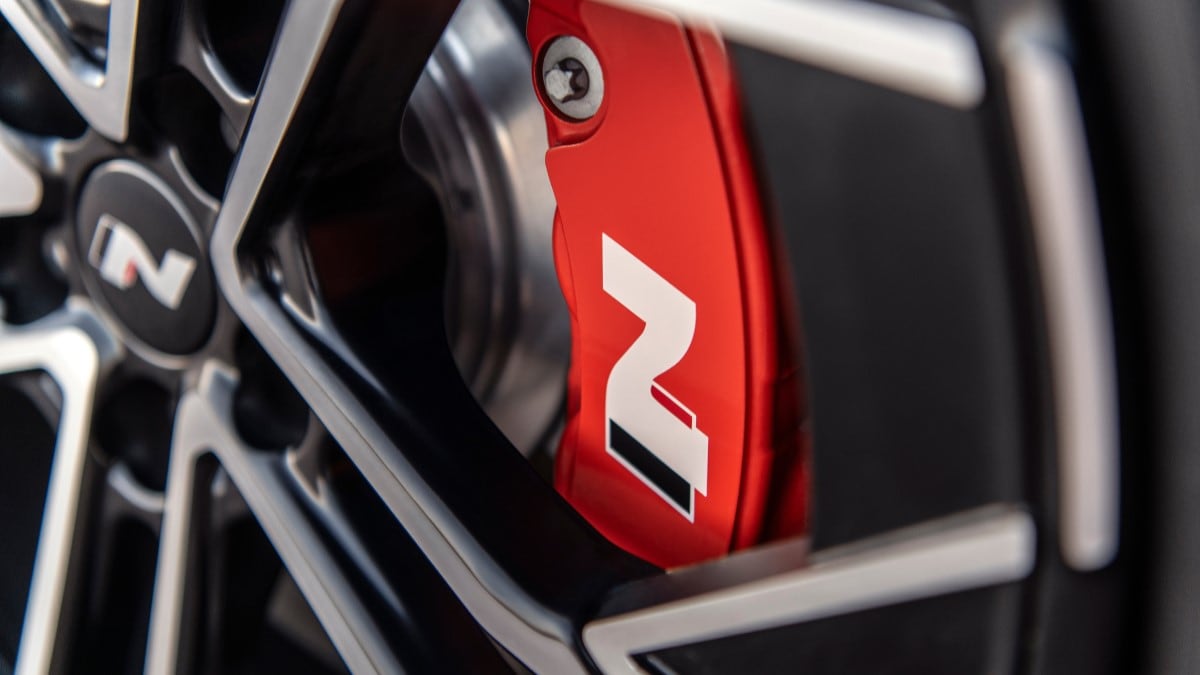
Power, “Grin Boost,” and a Solution for Brake Fade
“We are confident that both current Hyundai customers and new buyers will be impressed with the exceptional performance and technology of our new Ioniq 5 N,” says José Muñoz, president and CEO of Hyundai Motor North America.
The N gets a dual-motor system for all-wheel-drive (AWD) grip and a peak of 641 horsepower (with a 10-second surge from a system Hyundai calls “N Grin Boost.”) The boost automatically engages at launch, “allowing drivers to accelerate their vehicle like a professional race car.”
Hyundai says the 85 kWh battery loses less power in high heat than others thanks to new thermal management software and improved cooling channels.
What kind of range can you expect from it? We have no idea. Hyundai says range figures will be “confirmed closer to vehicle launch.” The standard model has a range of up to 303 miles.
Reining in that power is “Hyundai’s most powerful braking system to date.” It uses 15.75-inch diameter front rotors with 4-piston monobloc calipers and 14.2-inch rear rotors. Regenerative brakes — a trick EVs use to maximize battery charge — actually help improve braking performance, minimizing brake fade by taking some of the workload off the mechanical brakes.
Simulated Transmission
As an electric car, the Ioniq 5 N lacks a true transmission. But Hyundai says engineers have recreated the feel of one by electronically mimicking shifts and their sound. “Together, they enhance the joy of driving by simulating the power-shift feel, rev-matching downshifts, and powertrain notes of an ICE vehicle.” ICE has nothing to do with the cold, but is an abbreviation for internal combustion engine, i.e. a vehicle with a gasoline engine, vs. an electric vehicle like this one.
Handling improvements include “a specially-tuned N R-MDPS (Rack-Mounted Motor-Driven Power Steering) system with a quicker steering ratio and enhanced torque feedback logic.” The body, meanwhile, has a full “42 additional welding points and 6.9 feet of additional structural adhesives” to make it stiffer.
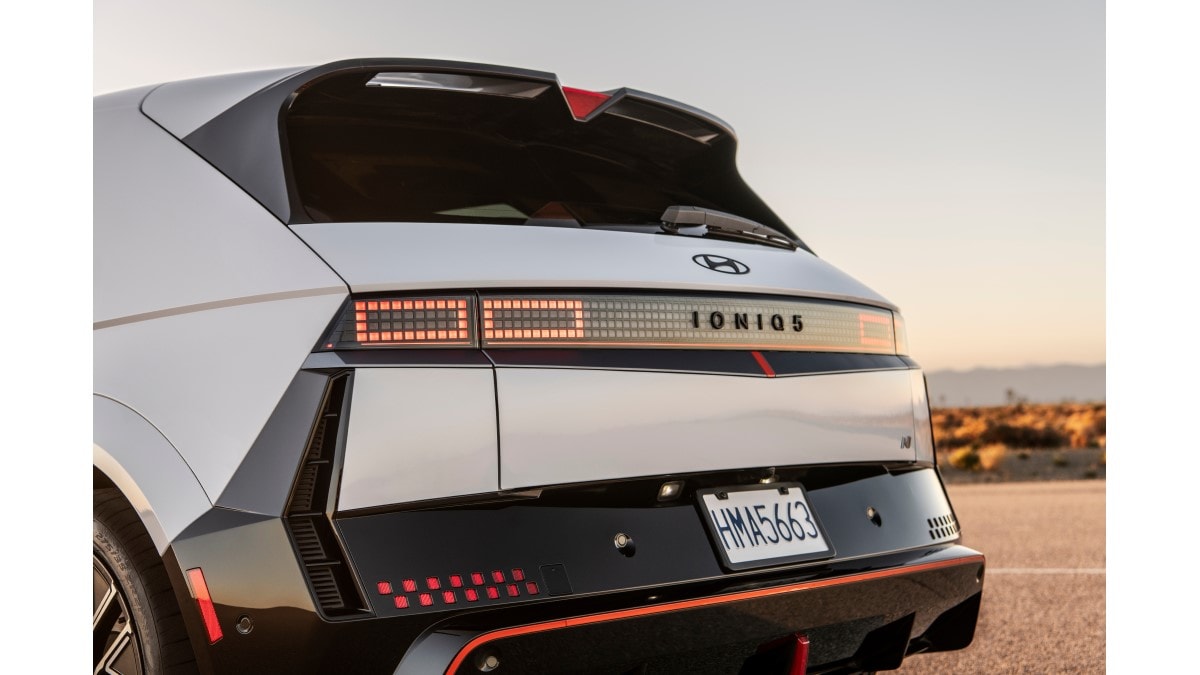
Signature Orange Trim
You’ll be able to spot the Ioniq 5 N on the road thanks to contrasting black trim and a wing-type rear spoiler. The N sits lower and is wider than a typical Ioniq 5 to accommodate wider wheels and tires. It’s also a bit longer thanks to a rear diffuser.
N cars get lower aerodynamic elements in a color Hyundai calls “luminous orange.” Here, it’s on the lip spoiler, side skirts, and rear diffuser.
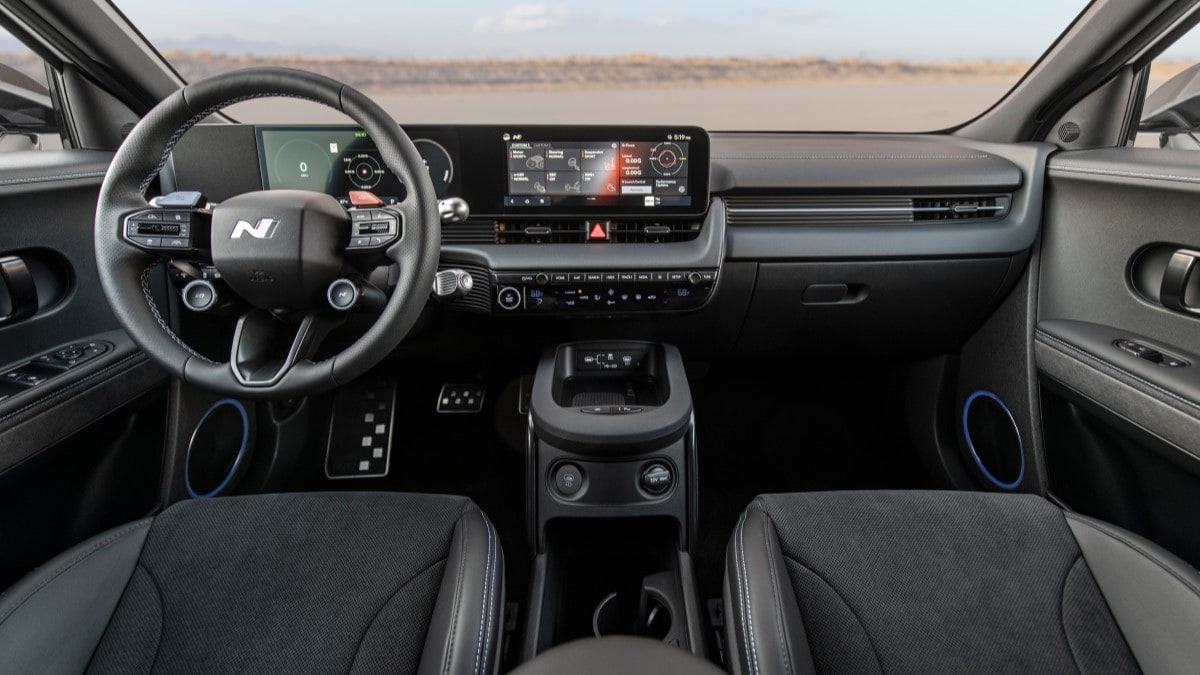
Lots of Recycling, Lots of Logos
Inside, N-branded elements appear everywhere you look. Hyundai says you’ll find the logo on the “steering wheel, seats, door scuff panels and metal pedals.” The center console has knee pads — a sure sign that engineers pushed the car hard enough to leave marks on their own skin.
The interior materials, however, aren’t just the Alcantara and leather of most performance cars. Instead, Hyundai uses recycled materials for door panels, yarn made from sugar cane, and … okay, there’s Alcantara on the seats, but it’s “recycled poly Alcantara.” This is an EV, after all.
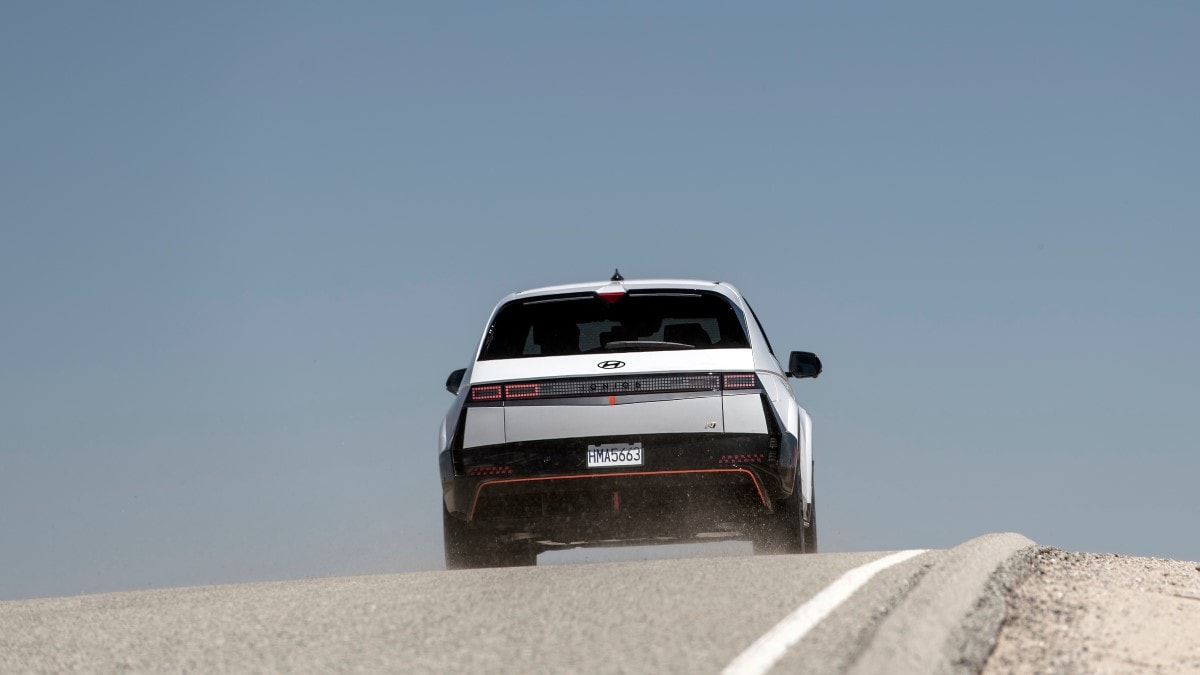
No Real Competition Yet
As an ultra-high-performance EV from a mainstream carmaker, it’s unique. We’d love to tell you which Ford Mustang Mach-E or Tesla Model Y to compare it to. But there really isn’t a fair competitor yet. The closest you could come is the Kia EV6 GT, which shares some parts but lacks many of the Ioniq 5 N’s track-day features.
For now, if you buy this, you’re likely to show up at track day to find no true competitors. That won’t be true forever. But it would make the first year of ownership fun.








